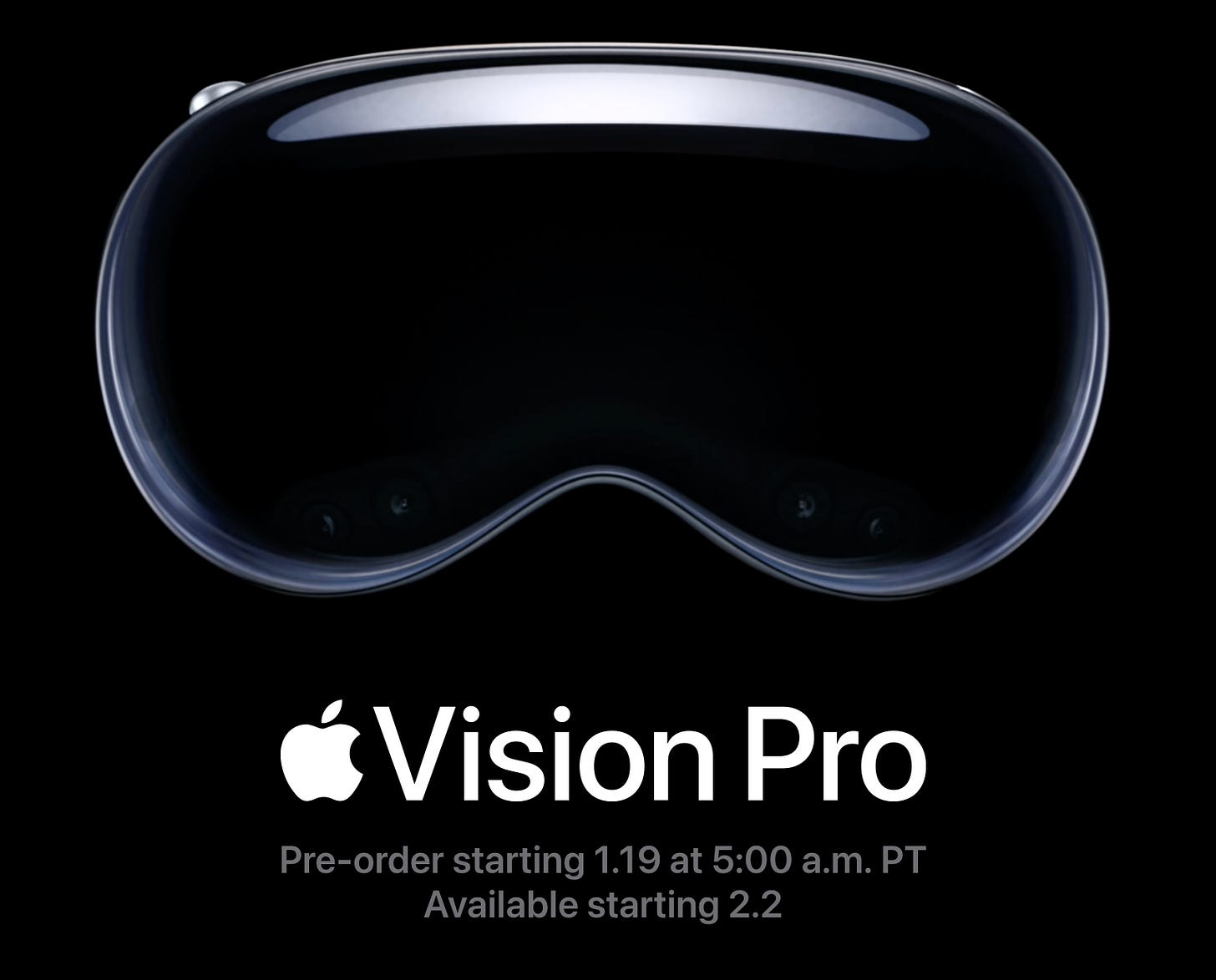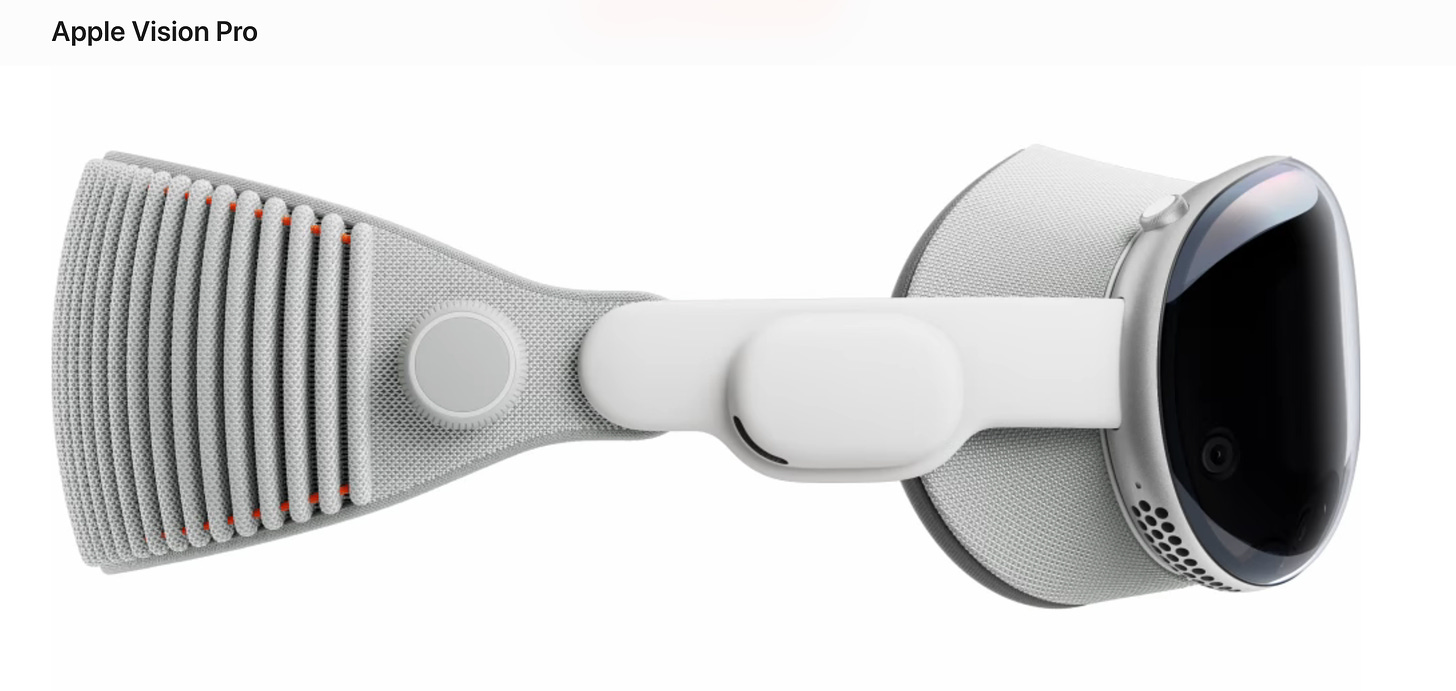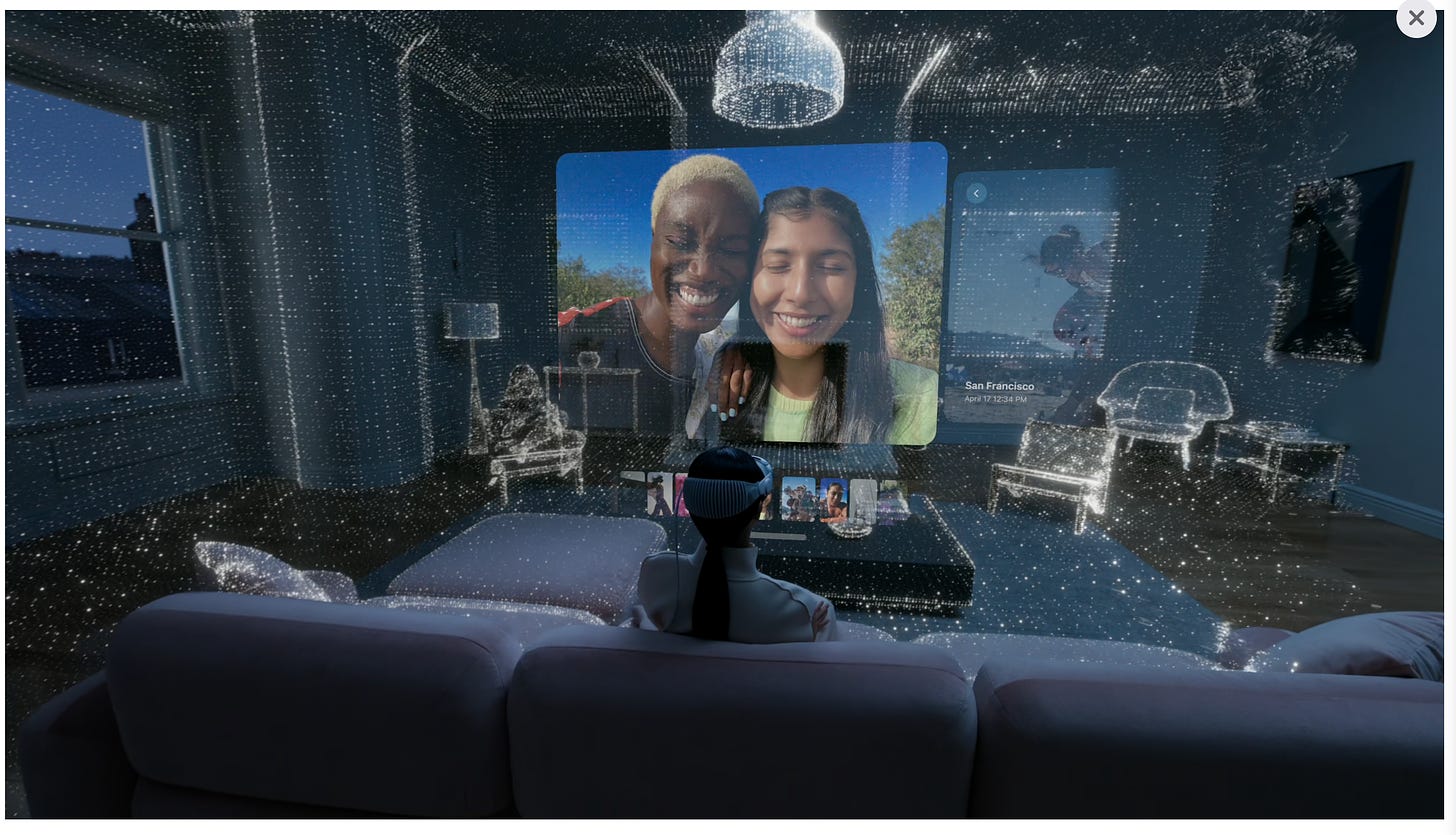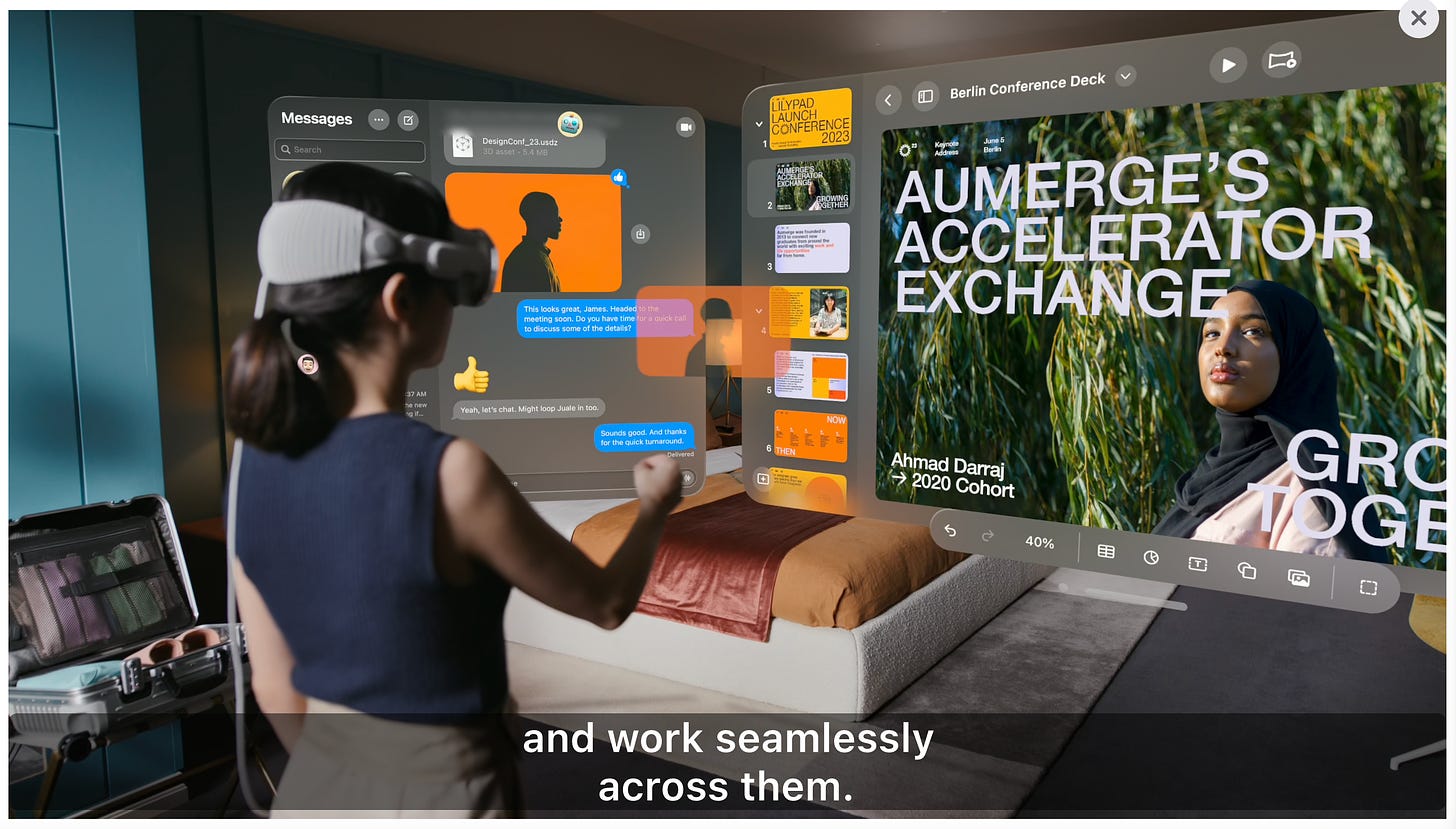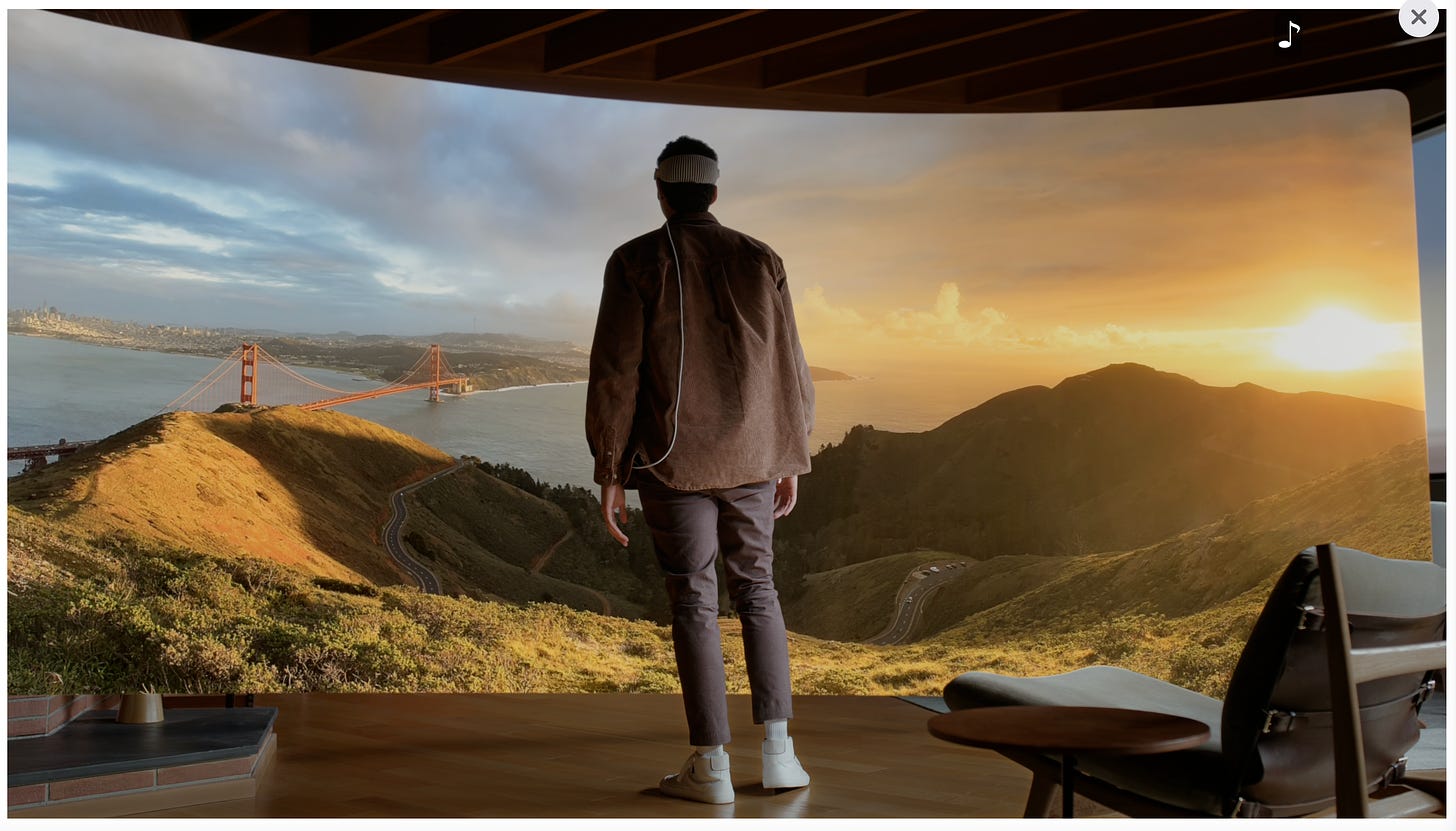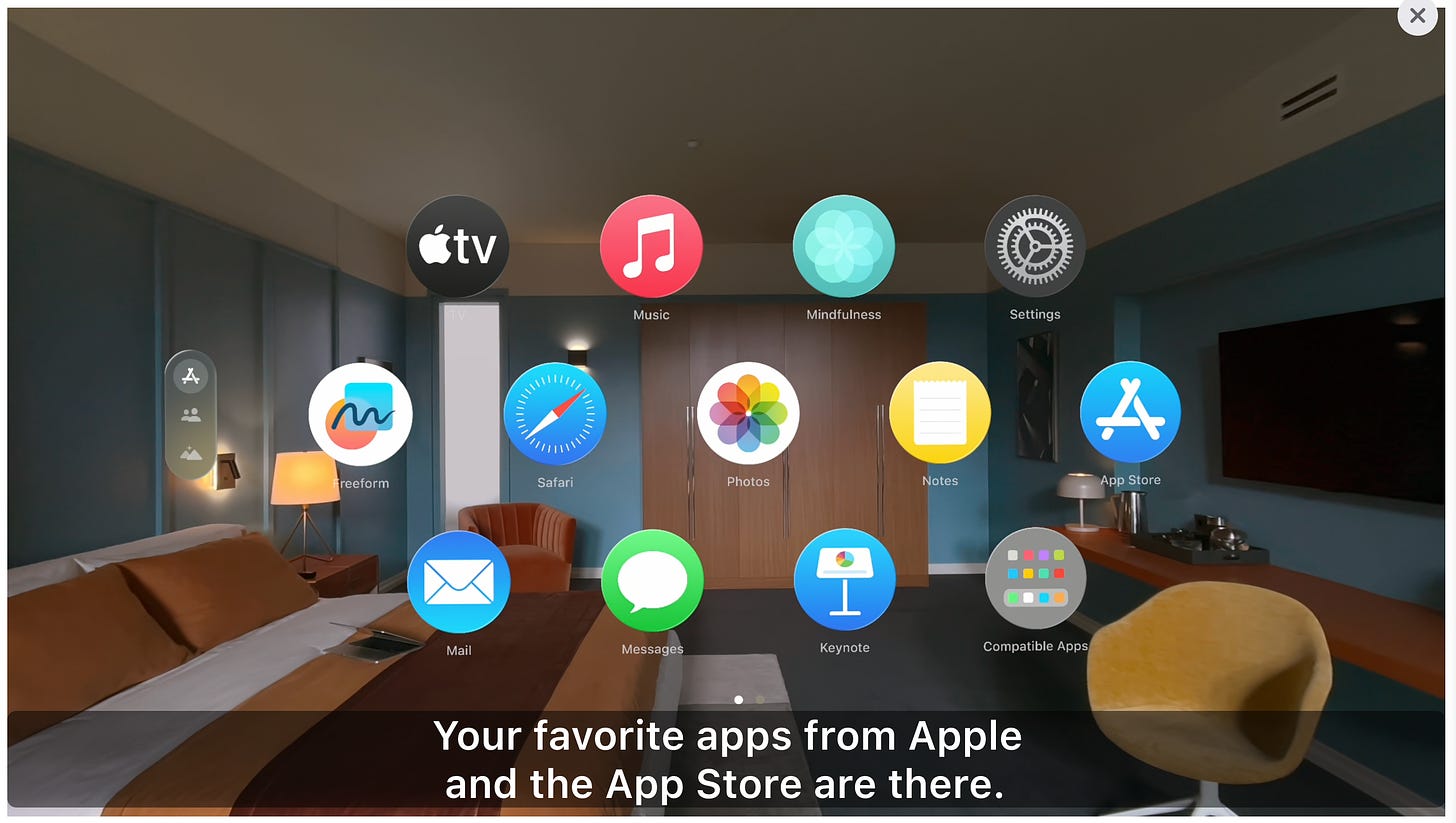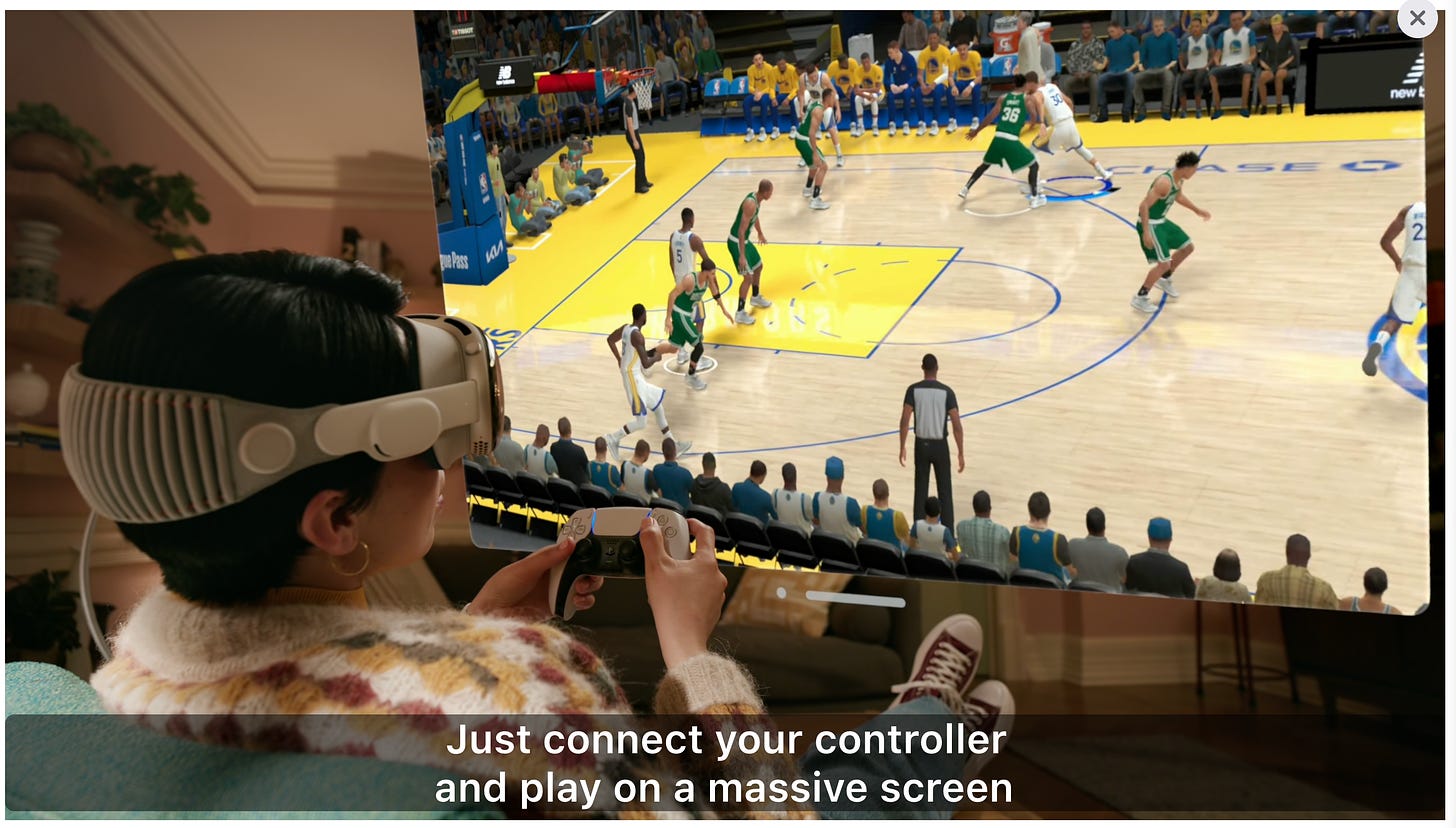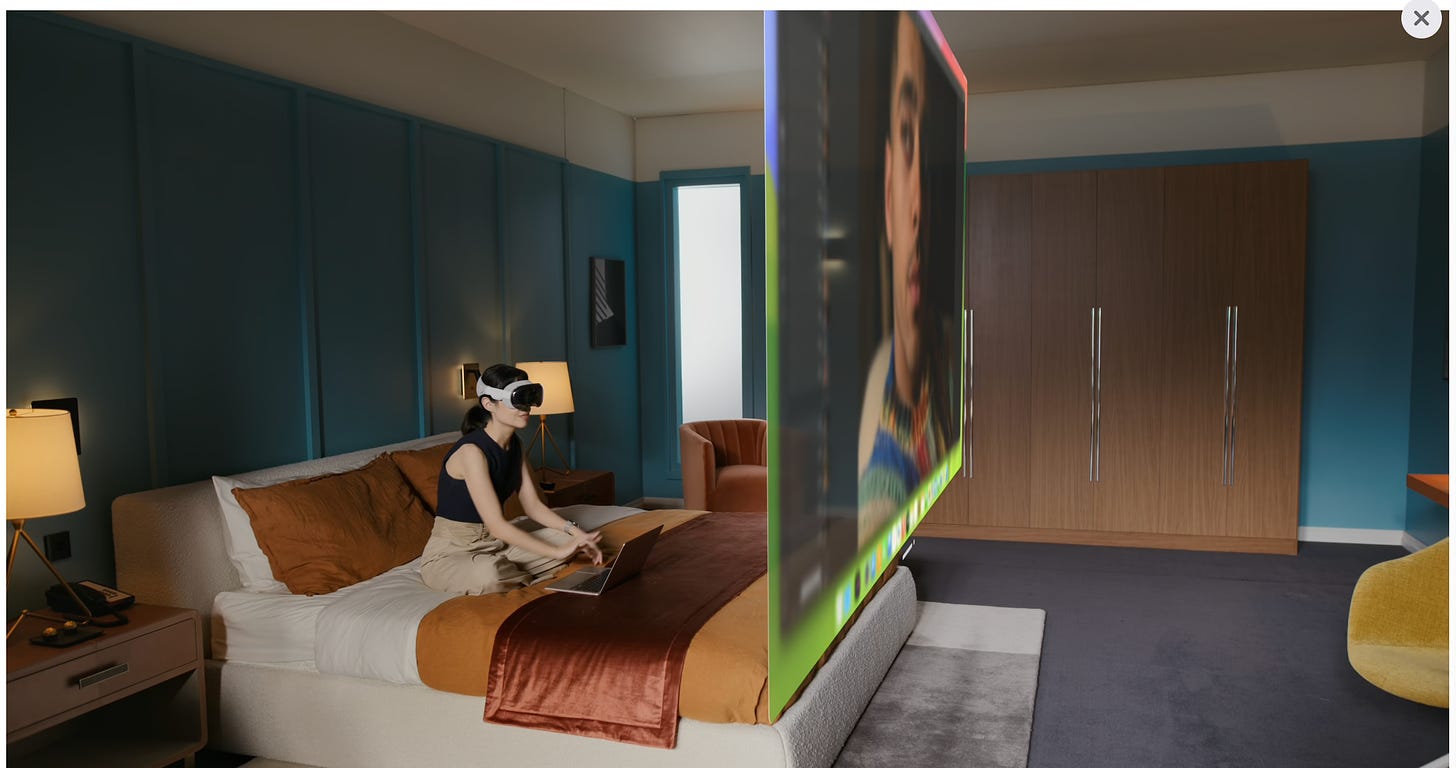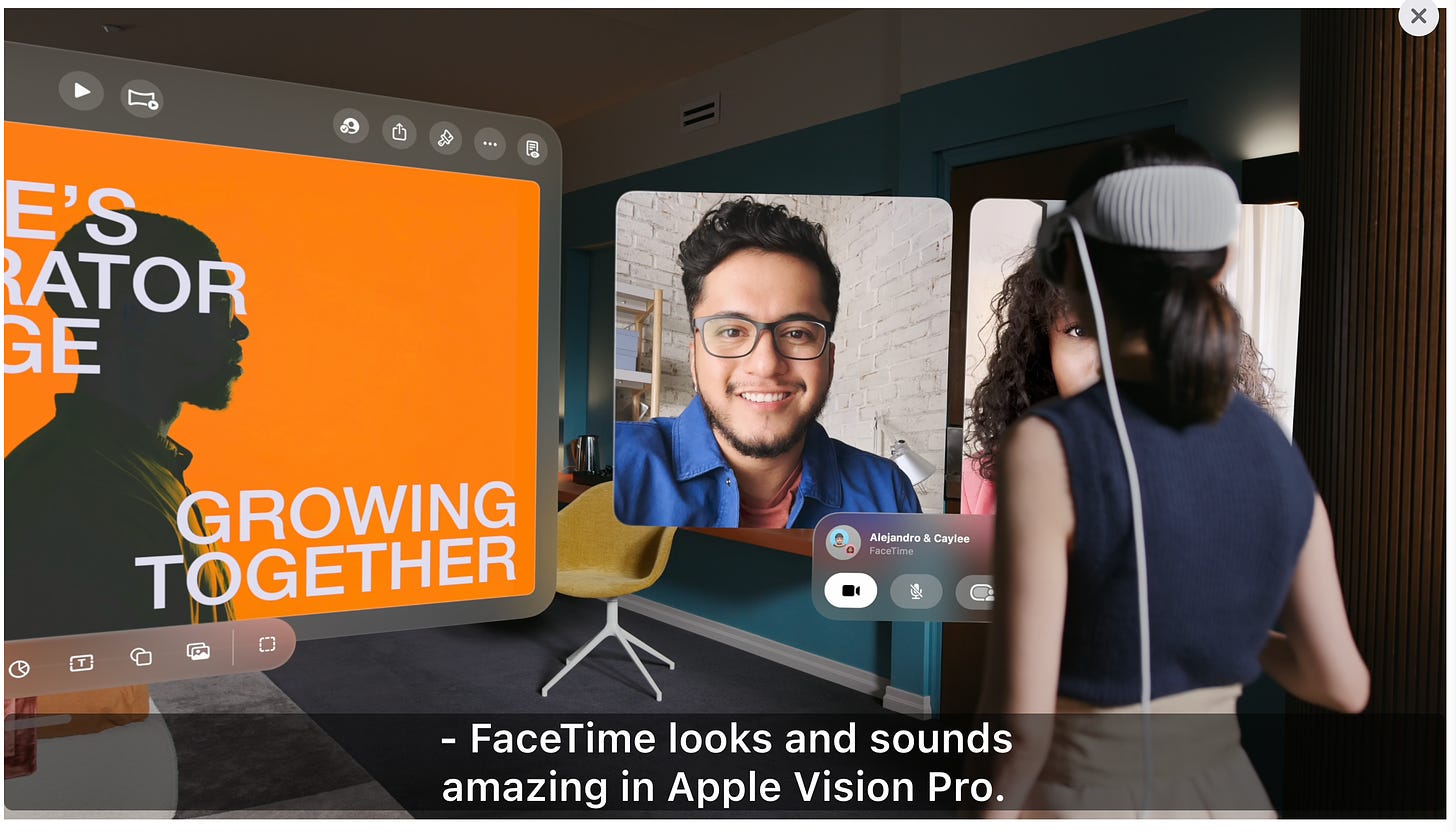How Apple's Vision Pro Could Transform Immersive Advertising
Edition 6 - Huge opportunities and risks for marketers.
February 2nd, Apple unleashes their much wanted Vision Pro virtual and augmented reality headset. While consumers count the days and the dollars for the $3,499 devices to arrive in-store, Apple has provided some tantalizing demos showcasing advanced displays, cameras, hand tracking and spatial integration.
The Vision Pro is a spatial computer, equipped with both augmented reality (AR) and virtual reality (VR) capabilities. But beyond the obvious entertainment applications, Apple's plunge into this new tech category has major implications for brands and advertisers. The Vision Pro headset and subsequent models could open up entirely new immersive ad formats and consumer experiences.
Next Era of Advertising
Forward-thinking marketers realize that devices like the Vision Pro represent the next era of advertising. For the first time, ads can fully surround the consumer in 3D virtual environments instead of being confined to flat screens.
And the Vision Pro's high-resolution passthrough AR cameras allow virtual elements to be overlaid convincingly into the real world. This capability will enable more interactive and relevant brand experiences tied to specific locations or products.
Everything from virtual sneaker try-ons to personalized recommendations as shoppers walk store aisles becomes possible. Or imagine seamlessly integrated brand partners within the landscapes of popular games and metaverse worlds.
The potential for Apple's AR and VR headset ecosystem to transform marketing is why many expect immersive advertising spend to balloon from $2 billion today to $30 billion by 2028 as the install base grows.
Early Innovation Required
To capitalize on this opportunity, brands should not wait for Apple's headset to achieve mainstream adoption before experimenting. That's because best practices are still being defined, and companies that start testing and learning now will have major advantages.
Creative minds need to envision how existing ad formats like video, display and rich media can translate to 3D environments. Expect innovations like holographic product demonstrations, cinematic brand stories that surround the viewer and interactive virtual retail showrooms.
Data privacy will be scrutinized heavily, so transparency around how senses, movements and interests are tracked will be critical. Standards don’t yet exist, allowing first movers significant influence.
Developers are Fueling the Future
Apple shares rose when Tim Cook noted that over 14,000 apps and games for its headset platform are already in the App Store. And many are likely exploring advertising integrations given the strong monetization potential.
Gaming will clearly be an important channel, with brands organically integrated into virtual worlds much like product placements in traditional entertainment. Social hangouts and metaverse-based worlds present additional opportunities to weave brands contextually into the user experience.
To power these new experiences, ad tech platforms are rapidly adapting. For example, IAS recently launched an XR suitability tool to help ensure brand safety. And Unity, Epic and other gaming/XR engines are building ad offerings directly into their developer toolkits.
The Vision for Immersive Ads
While still early days, expect creative brand activations to drive initial consumer adoption and buzz. For example, imagine an auto brand that lets users virtually test drive any model over photorealistic cityscapes and country roads.
Or a CPG brand might develop an app that transforms your kitchen into an immersive cooking show featuring their products. Another may build a virtual fashion show letting users view next season's collections from their living room.
As headsets like Apple’s Vision Pro better replicate reality through AR, brands can overlay digital gamification onto real-world experiences like searching for virtual Easter eggs throughout your neighborhood.
No doubt many early VR/AR ad attempts will induce headaches or dizziness instead of engagement. But the core strengths of Apple's headset hint at why brands are rightfully excited for the next generation of immersive advertising only just peeking over the horizon.
Expect this new platform to present both huge opportunities and risks for marketers. But the companies moving boldly today to test and learn will have the greatest influence on defining best practices and building consumer trust. With people soon interacting virtually as much as physically, the real world and metaverse appear poised to collide through devices like the Vision Pro.
So brands should start prepping now for the immersive advertising revolution ahead.




